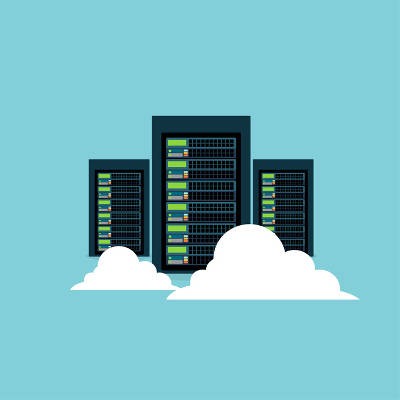Today is the first day of the third decade of the 21st century. For some, it’s just another year, but for others it seems almost impossible that we’ve reached this point without floating cars and manned missions to Jupiter. Fifty years ago, some of the technology that is used in the course of doing business was simply fiction or conjecture. We thought it would be neat to take a look at some of the technological changes made since 1970.
Telesys Voice and Data Blog
Improvements in technology have allowed us to come a long way since the days of our ancestors, which is made exceptionally clear by our developments in the realm of healthcare. There are so many ways that healthcare providers can use information technology to their advantage, so we’ll cover a select few here.
The small businesses that rely on technology typically logs a lot of phone time with technology vendors. Decision makers that may not know more than the average person about IT can be left making important technology decisions when they think they are just making financial decisions. Today, we’re going to explain how they are different and what your next step is.
Technology innovation in the workplace is something that is constantly shifting and changing, depending on what’s hot at any specific time. These days, it might seem like office technology innovation is stagnating, but we assure you that it’s still constantly improving. We’ll walk you through some of our favorites to improve data accessibility and workplace productivity as a whole.
An engaged employee will be invested in the future of your company, as well as their own future that they can see within your business. Unfortunately, research showcases that the numbers don’t look so bright for employee engagement in the workplace. According to a 2015 poll from Gallup, only about 30% of employees find themselves engaged in the workplace, while about 50% say they aren’t engaged with their work, and 20% claim to be actively disengaged by their workplace.
If your business uses technology to be more productive and efficient, you know that as soon as you buy a piece of new technology, there is another one right behind it that has more power, or better features. This is true for consumers as well. This constant innovation is what has made technology a viable option for many small businesses. After all, if computers hadn’t been innovated on constantly, they’d still be the size of a room (or wouldn’t exist at all).
For those who don’t know, the term information technology is an encompassment of the technology used in the facilitation of rendering, sharing, and storing data. Any piece of technology that is used to process, keep, send, and secure digital information, is considered IT. Today, we will look at some of the emerging technologies presenting solutions for businesses and individuals, alike, heading into 2019.
Information technology has always been a hotbed for future predictions. Whether it was Marconi’s grand plans for wireless communications or the bold prediction that every person would be carrying around a computer that fits in the palm of their hand, the future always looks bright when new technologies are considered. But, what does the immediate future of information technology hold?
As technologies emerge and trends change, organizations face massive paradigm shifts involving the tools and methods they use to conduct business. Right now, we’re in the middle of one of the most significant shifts in decades; more and more businesses are relying on cloud computing.
How often do you see smart technology in headlines? The term is thrown around a lot, and it’s because there are countless products circulating in both the consumer and business environments. These connected devices range from smart forks to smart cars, so you can imagine that there are a fair number of useful (as well as useless) applications of this technology. How has it changed in recent months, and what will smart technology look like in the future?
For Your Person
Smart products are produced for a variety of reasons with one of the more practical ones being monitoring your physical wellbeing. One of the best and most recognizable devices for this purpose is Fitbit, which has ushered other companies dedicated to health monitoring devices through the door. Health bracelets, watches, and smart fabrics all contribute to this trend of connected devices encouraging people to care more about their health using technology.
These devices contain microprocessors, sensors, and energy sources, and they contain the hopes and dreams of engineers who have worked tirelessly to create some of the most compact technology solutions on the market today. These devices are so useful that there were 125 million wearables shipped in 2017 alone. Here are some of the most popular smart technologies on the market today:
- Fitness trackers: The most simple fitness trackers can count your steps and estimate calorie loss, as well as distance traveled, sleep quality, and speed.
- Smart watches: Some smart watches can track fitness information, as well as other features that work with other apps on your mobile device.
- Smart clothes: As you might imagine, most smart clothes are typically designed for use with fitness. There are self-cooling shirts that react to your body temperature, as well as yoga outfits designed to help your yoga posture.
For Transportation
Automobiles have also made great strides in smart technology. You’ll see cars that offer everything from heads-up displays to screens that can showcase all kinds of content. Some cars are even capable of driving themselves, though this is a technology that’s still developing. The concept, however, is that connected technology is fueling future transportation initiatives. It’s thought that in the future, this will be a major part of the automobile industry.
Technically, smart technology in cars has been being used since 1996. Every single car that has been manufactured since has a built-in on-board diagnostic system. This helps mechanics understand some of the intricacies of vehicles by accessing data stored by the computerized system. You may have even used some of these diagnostic tools yourself when you see your Check Engine light turn on.
Some smart enhancements go beyond the practicality of diagnostics and simply make the user experience better. There are navigation systems designed to help users make their way to their destination, as well as control interfaces for temperature, media, and gear status. There are cameras that activate while your vehicle is in reverse to help drivers safely back up, as well as side-sensors to detect when something is a little too close for comfort.
Augmented reality could also make a move on smart cars. Windshields and rear-view mirrors with augmented reality can (and likely will) become standard features on new automobiles. Google and Apple have begun to design devices for integration with these smart car features, allowing for a consistent connection for use with music or other media.
For Your Home
Most smart devices are designed of use in the home. There are some that have no business being connected, but there are others that are designed to save on energy costs and other practical uses. The most popular smart devices include Amazon Echo and Google Home. Since they can perform multiple different roles and control certain devices, they are quite helpful. Other devices used in the smart home include locks, cameras, lights, thermostats, and anything else that can be controlled digitally through a smartphone app.
Several of today’s most used appliances come with smart technology installed, including refrigerators, ranges, faucets, washers, dryers, dishwashers, vacuums, and so much more. Questions have arisen about the practical use of many of these smart appliances, but their major draw is that they get smarter and more efficient depending on how they are used. They can lead to lower energy costs in the long run and effectively offer value for a longer length of time than a normal device. Just about all smart technology has this principle in mind.
While smart technology generally comes with a higher price tag than usual, this is only because it hasn’t become mainstream yet. Once more of these devices flood the market, the price of it will drop considerably. How will your organization leverage smart technology in the future? To find out, reach out to the IT professionals at Telesys Voice and Data.
The sad truth about computers is that when they inevitably break, you have to get them fixed; or, you have to order a new one. When PCs started to be utilized for mass productivity, however, businesses had to find a better way. It’s been years since the first managed services provider hung out their shingle, and over that relatively short time the managed services industry has grown to be a $150 billion-a-year industry. The combination of IT becoming an important part of nearly every business resulted in the obvious demand for affordable IT support. This trend has seen many businesses cutting IT staff to make way for outsourced managed services, and all it provides. A problem that both businesses, and the MSPs that they hire, face is that computers eventually break.
For years now businesses have had to set aside capital to fix and replace their information systems; capital that could be better served invested elsewhere. Managed services tries to put a flat rate on every piece of IT you need managed and comes up with a consistent billable figure that not only allows a business to plan their operational IT budget more accurately, but allows them access to the expertise they may have lacked without a dedicated IT administrator. MSPs form of proactive maintenance can go a long way toward providing the kind of longevity that any organization would want from their hardware; but, while we can do a lot to protect your systems from failure, there’s no way to definitively know when a piece of hardware is going to fail.
When technology breaks, it leaves a hole in your functioning business that has a cost attached to it. If it's a switch or a router, or even a workstation that needs to be replaced, it’s cheap enough. The cost to replace an in-house enterprise server, however, is between $5,000 and $20,000 dollars. Couple that with the fact that hardware prices that had been dropping for a decade have begun to rise, it suggests that it won’t be getting cheaper to replace a physical server unit anytime soon. At Telesys Voice and Data, we like to think of ourselves as solution providers, and today there are more options than ever for the housing, management, and maintenance of an organization’s computing infrastructure, including storage and applications.
When your server is about to fail, and you need a new one, buying a new one has to be a no-brainer. So how do you go about it? How do you get the data from the old hardware to the new hardware? What about networking? With so many factors to consider, relying on the experts is a must. If you have in-house technology professionals, they probably have this process worked out as to not cause the business a lot of additional problems. After all, a failed server carries with it enough anxiety without the additional fear that goes with not being able to do the work that is required to sustain profitability. But, if you don’t have dedicated IT personnel on staff, the process might get a little overwhelming.
Let’s assume that (for this example) your organization’s file server is about to fail and you don’t have any contingency in place. What variables do you need to consider?
- Are you backed up?
- Do you have failover?
- In-house or Cloud
- Migration plan: RTO & RPO
- Functionality and Security
Are You Backed Up?
Has your organization put in place a backup function? Before we start in on a new server, every business should be utilizing a comprehensive backup and recovery system. Not only do you protect your data (one of the most lucrative assets your business has), but it also gives you failover options that many organizations might not have. Our Backup and Disaster Recovery system features incremental backups and the ability to use the device as a failover server, so your business isn’t dealing with sustained downtime while you replace or repair your server.
Do You Have Failover?
A failover system is a system in place that allows you to protect your organization from system failure. By having a system to continue to access critical data, you can keep business moving while you replace or repair vital hardware. As stated above, our BDR gives temporary failover server capabilities to ensure the smoothest transition you can expect.
In-House or Cloud?
The big decision many businesses have to make nowadays is where to host your server. There are pros and cons to moving your infrastructure to the cloud, as today a well-designed-and-implemented cloud server is often more beneficial depending on the needs of your organization. The average business has multiple servers, so when one is on the verge of failure (or fails outright) and you are forced to use your failover platform as a temporary server, considering a move that will allow you to manage to get the server up and running again efficiently has to be a consideration. There are many cloud-hosted options to consider. Performing the cloud vs in-house determination. When your hardware gets old (or your software is), you have to start to consider your options. Let’s look at some variables you should be cognizant of when deciding whether or not to move your computing infrastructure offsite.
In-House Computing - The traditional method of computing, some would argue, is tried and true. You purchase the hardware outright, you license the software you need, you equip it with the storage you need, and you manage and maintain it in house. The server unit itself is a big expense, but most small to medium-sized businesses could justify the purchase if it was between losing data and continuing efficient production. You have to ascertain what the costs are and see if a new onsite server is cost effective for you.
Cloud Computing - If your computing infrastructure needs to be replenished, there are several great cloud-hosted computing options your business could consider. From affordable public cloud solutions to resource and capital intensive private cloud solutions, the cloud has options for any business that needs to upgrade their computing infrastructure. The cloud also helps organizations that want to put an emphasis on remote work and collaboration.
Migration Plan: RTO & RPO
When migrating data onto a new server from backup, you need to understand the costs of doing so. That’s why disaster recovery experts have defined the necessary metrics you need to understand when recovering data after a server failure (or any major data loss incident). They are Recovery Time Objective (RTO) and Recovery Point Objective. (RPO). In the context of data recovery, the RTO is a measurement of the amount of time your business can go without storage or applications while they are restored, while the RPO is a measure of how far back data recovery needs to go to get your organization up and running efficiently. Typically the two values work against each other, so determining how much data you need and how fast you’ll need it by to keep your company functional becomes extremely important.
New and Old, Side-By-Side
Once you have your new computers up and running with all the software and appliances configured, make sure to leave your old system up (if possible), even if a hardware failure is imminent. This will allow you the time to ensure that your new server is working optimally when it matters most. After you’ve ironed out all the kinks, you then can shut down and recycle your old server.
There are many more tips and tricks we can give you to ensure that in replacing your old technology, you are getting powerful, effective, and reliable upgrades. For more information about proactive managed services that can tell you if it’s time to refresh your hardware, call the IT professionals at Telesys Voice and Data today at (800) 588-4430.
Selecting a managed service provider should be like selecting any employee. You need to make sure that your expectations are going to be fulfilled, and that your selection will be there when you need them to be. However, the criteria you examine your potential IT service provider by should be a little different than how you evaluate your other prospective team members.
With 2017 on its way out, there are many great technology solutions that businesses can take advantage of. Some of the most notable topics in business technology in recent years include business intelligence, artificial intelligence applications, and machine learning. What are some of the most important technologies that you’ll want to keep in mind for the 2018 business year?
You’ve used a mouse for years, but do you know of all the neat little tricks that it’s capable of? We’ll show you just how much you can get done with your mouse.
Have you ever felt like talking to someone in the technology industry was like speaking with someone who spoke a different language? You’re not alone. It’s no secret that the IT industry loves their jargon - and has dozens of buzzwords at any given time. These are a few such words that have the industry buzzing right now!
Technology plays a pivotal role in the way modern businesses function, and as a result it carries some element of risk. An example of this is how companies store electronic records. While the implementation of measures that are designed to provide greater ease of use and organization for a business’ employees make business move faster, it also makes it that much easier for a hacker to locate and steal data. Small and medium-sized businesses, in particular, are vulnerable, as they may not have dedicated IT security.
Every business is searching for ways to improve productivity. There are now quite a few methods being used to boost the amount that each employee can accomplish, many of which revolve around technology. Admittedly, some of these methods may not be attainable for the average SMB… yet. However, as technology advances you may find yourself able to leverage some of these productivity-enhancing tools to improve the look of your bottom line.
Someday, You Could Have Smart Desks
For instance, smart desks. By connecting to the company’s local-area network, these Internet-of-Things workstations can track the behaviors of your employees to help improve their health. We’ve all heard that it is better for the human body to stand up than sit at their desks, but how many people actually do? A smart desk helps to solve this problem by alerting its occupant when to stand. Furthermore, smart desks can serve as a health monitor for an employee, allowing health issues to be caught preventatively, potentially reducing time out of the office and the amount of missed productivity.
On the topic of furniture, offering employees adjustable office furniture to use will reduce the amount of discomfort employees will experience as they attend to their responsibilities.
Yes, Television Can Be More Than a Distraction
If handled correctly, keeping a few televisions in the office can be a benefit to your employee’s productivity. After all, they don't necessarily have to be playing an afternoon soap opera or reality show. Use a television to display important company matters, like upcoming meetings, deadlines, KPIs, sales wins, and other business subjects to keep goals and deadline top-of-mind for employees. In fact, these displays can even help to inspire a little friendly competition in the office, as different departments see each other being more productive and feel the need to measure up.
There’s also a lot to be said about the value of video conferencing. If an employee needs to be two places at once--like in a critical meeting while also across the country attending an important conference--a video conferencing program can allow them to do both.
Work Smarter to Work Harder
Of course, there are plenty of other tools available to make being productive a simpler prospect for your employees. Automation can eliminate manual tasks to free up resources. After all, the more time an employee has to spend initiating a data backup or some other day-to-day. critical, but time-consuming task, the less time they can spend producing some benefit for the company.
It is also crucial that your employees are working with the solutions that will benefit their productivity the most. This means that they aren’t dealing with outdated hardware and software that experiences issues and hang-ups, and are equipped with the means to achieve optimal output. Ensuring that your technology is up-to-date and well-maintained can have a big impact to how well they work, and as a result, how well your workforce can do their jobs.
For help with creating a plan that ensures maximum productivity for your entire office, reach out to Telesys Voice and Data. We can help you implement the necessary components to ensure your office remains productive. Give us a call today at (800) 588-4430.
It’s difficult to put a value on your organization’s technology solutions. While you might be tempted to assign a monetary value based on how much it all saves you, you also need to examine how much it costs you in the long term. Can you optimize your network even more than it currently is? Can you even keep track of the countless moving parts of your IT infrastructure? Managed IT might be able to help.
Quick question for you: how many email accounts do you have? How many do you have to regularly check? How many different platforms do they utilize? If there’s too many, important communications are easy to miss in the ensuing mess of messages. Fortunately, there are a few ways that this can be avoided, which we’ll review for this week’s tip.
It’s fascinating to keep an eye on the latest technological developments, and the excitement really builds when concepts once deemed farfetched make their way onto the marketplace. Here are four technologies that we’re super excited to get our hands on!
Mobile? Grab this Article!
Tag Cloud




















